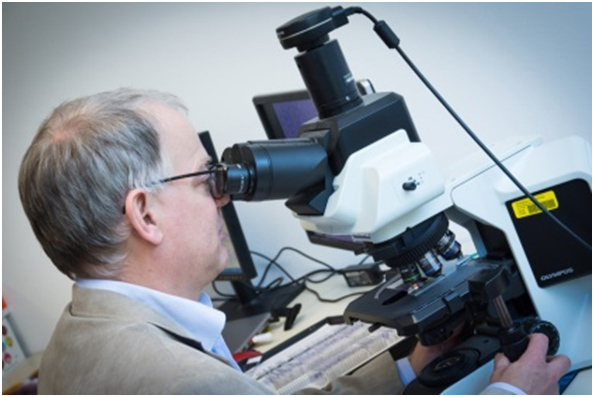Anaplastic Large Cell Lymphomas (ALCL) is a rare type of lymphoma comprising approximately 16 percent of all T cell lymphomas. The molecular analysis of human tumour samples to find new, personalised therapeutic targets and their validation in tumour models has become a attractive approach in cancer research, which can advance clinical management of cancer patients. This is even more important for rare tumours, like ALCL, in which researchers rely on a very small number of patients. New research led by the international ERIA consortium and with the participation of the SFB members Richard Moriggl, Mathias Müller, Birgit Strobl has now identified that all sub-types of ALCL rely on the same signalling pathway for survival.
TYK2 is a member of the JAK family of tyrosine kinases that is involved in chromosomal translocation-induced fusion proteins found in some anaplastic large cell lymphomas (ALCL). Here the authors show that TYK2 is highly expressed in all cases of human ALCL and it prevents apoptotic cell death in ALCL human cell lines by increasing the expression of Mcl1, a pro-survival member of the BCL2 family. Moreover, TYK2 inhibitors are able to induce apoptosis in ALCL cells. Therefore, TYK2 represents an attractive drug target due to its unique enzymatic domain and TYK2-specific inhibitors show promise as novel targeted inhibitors for ALCL. This is an urging therapy that still needs to be developed to treat immunological disorders, such as rare lymphomas.
Publication in Leukemia
Nicole Prutsch, Elisabeth Gurnhofer, Tobias Suske, Huan Chang Liang, Michaela Schlederer, Simone Roos, Lawren C. Wu, Ingrid Simonitsch-Klupp, Andrea Alvarez-Hernandez, Christoph Kornauth, Dario A. Leone, Jasmin Svinka, Robert Eferl, Tanja Limberger, Astrid Aufinger, Nitesh Shirsath, Peter Wolf, Thomas Hielscher, Fritz Aberger, Johannes Schmoellerl, Dagmar Stoiber, Birgit Strobl, Ulrich Jäger, Philipp B. Staber, Florian Grebien, Richard Moriggl, Mathias Müller, Giorgio G. Inghirami, Takaomi Sanda, A. Thomas Look, Suzanne D. Turner, Lukas Kenner and Olaf Merkel
